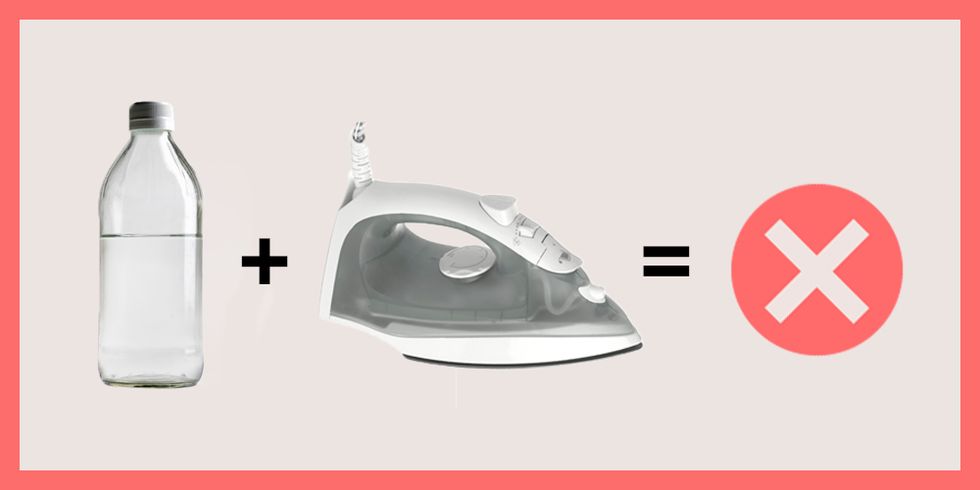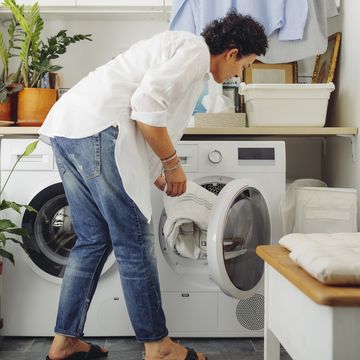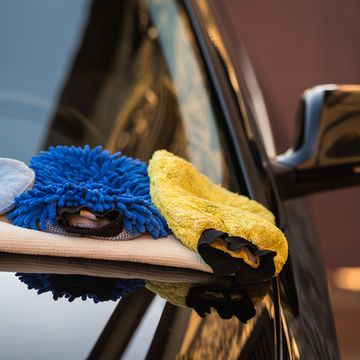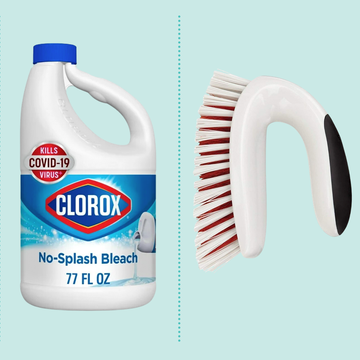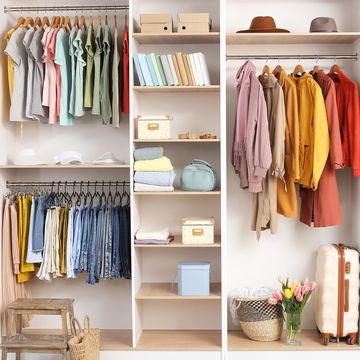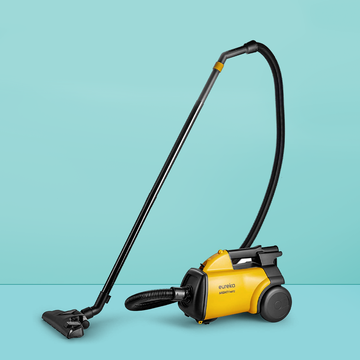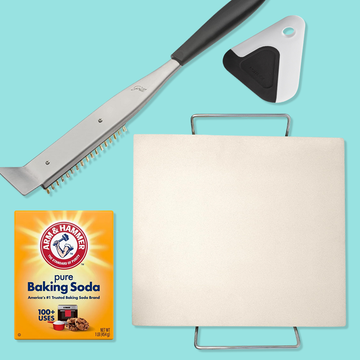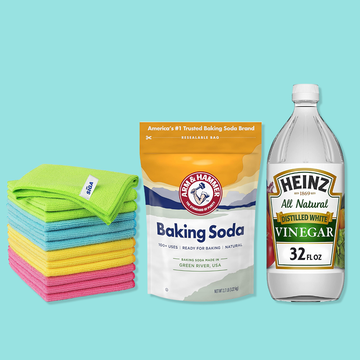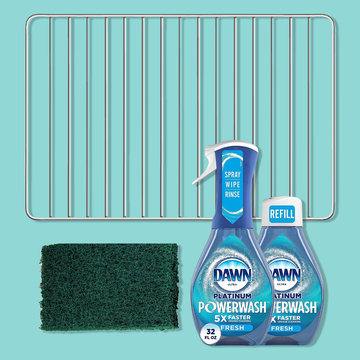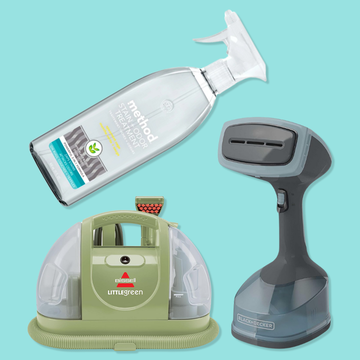We're huge fans of having vinegar in our cleaning arsenal. It's great at lifting stains, freshening laundry, cleaning windows and much more. Plus, it's inexpensive and often on hand. But vinegar is also acidic, which means it can majorly damage some materials. That's why we've identified all the places you should — and shouldn't — be using this around the house.
What You CAN Clean With Vinegar
1. Windows
Instead of spending money on window cleaners make your own. Mix 2 tablespoons of white vinegar with a gallon of water and dispense it with a spray bottle. Squirt on, then wipe off with a dry cloth.
2. Dishwashers
Just as you descale a coffee pot, you need to de-gunk your dishwasher too. Carolyn Forte, director of the Good Housekeeping Institute Cleaning Lab, recommends placing a large glass measuring cup filled with two cups of vinegar on the top rack, then running the machine as usual — no detergent, no heat dry. "The vinegar will mix with the water as it circulates," Forte says. This will deep-clean your appliance.
3. Towels
When towels start to feel stiff, toss them into your washing machine with 1/2 cup of white vinegar — and no detergent. This will help remove detergent residue and minerals that are making them feel scratchy.
4. Carpet
Battle carpet stains, like wine, by mixing one tablespoon of liquid hand dishwashing detergent and one tablespoon of white vinegar with two cups of warm water. Use a clean white cloth or sponge to apply a little bit at a time, blotting frequently with a dry cloth until the stain disappears.
5. Supermarket produce
Vinegar may help remove bacteria and pesticide residues from fruits and veggies. Mix three parts water to one part white vinegar and dispense in a spray bottle. Then rinse with water.
6. Stubborn glue
If you're having trouble getting that annoying sticky label residue off of a product or if you accidentally glue something together, try using vinegar as a solvent to dissolve many common adhesives. Vinegar is also good at cutting grease.
What You Should NEVER Clean With Vinegar
1. Granite and marble countertops
"The acid in vinegar can etch natural stone," says Forte. Use a mild liquid dish detergent and warm water instead.
2. Stone floor tiles
Just like countertops, the natural stone in your bathroom doesn't take kindly to acidic cleaners, like vinegar and lemon. Avoid ammonia too, and stick to cleaning with special stone soap, like Simple Green Stone Cleaner and Polish ($6, amazon.com), or a mild liquid dish detergent and water.
3. Egg stains or spills
If you drop an egg on the floor (or find that your house or car has been the victim of some rambunctious teens), don't reach for the vinegar to help clean up. Just like when you poach an egg, the acidity can cause it to coagulate, making the egg more difficult to remove.
4. Irons
"Vinegar can damage the internal parts of an iron," says Forte. "So don't pour it through to freshen and clean it out. To keep irons from clogging, empty them completely after use, and follow the manufacturer's cleaning instructions."
5. Hardwood floors
The jury's still out on this one: Some homeowners find that vinegar solutions clean their sealed hardwoods beautifully, but others report that it damages the finish. Our advice: Use a cleaner specifically formulated for hardwood, like Bona ($8, amazon.com). But if you want to try vinegar, always dilute with water and test it on an inconspicuous spot before you tackle an entire room.
6. Truly stubborn stains
Blot, sponge and try as you might, grass stains, ink, ice cream and blood won't come out with vinegar alone, says Forte. They tend to set into the fabric quickly or just don't respond to acid, so treat them with a prewash stain remover like Shout Advanced Gel ($14 for a 3-pack, amazon.com) and launder with a detergent with enzymes (check the package — most stain-fighting detergents have them).


Lauren is a senior editor at Hearst. She was previously the senior editor at WomansDay.com and the home editor at GoodHousekeeping.com and HouseBeautiful.com. Her book club, ramen, and jean jackets are a few of her favorite things.

